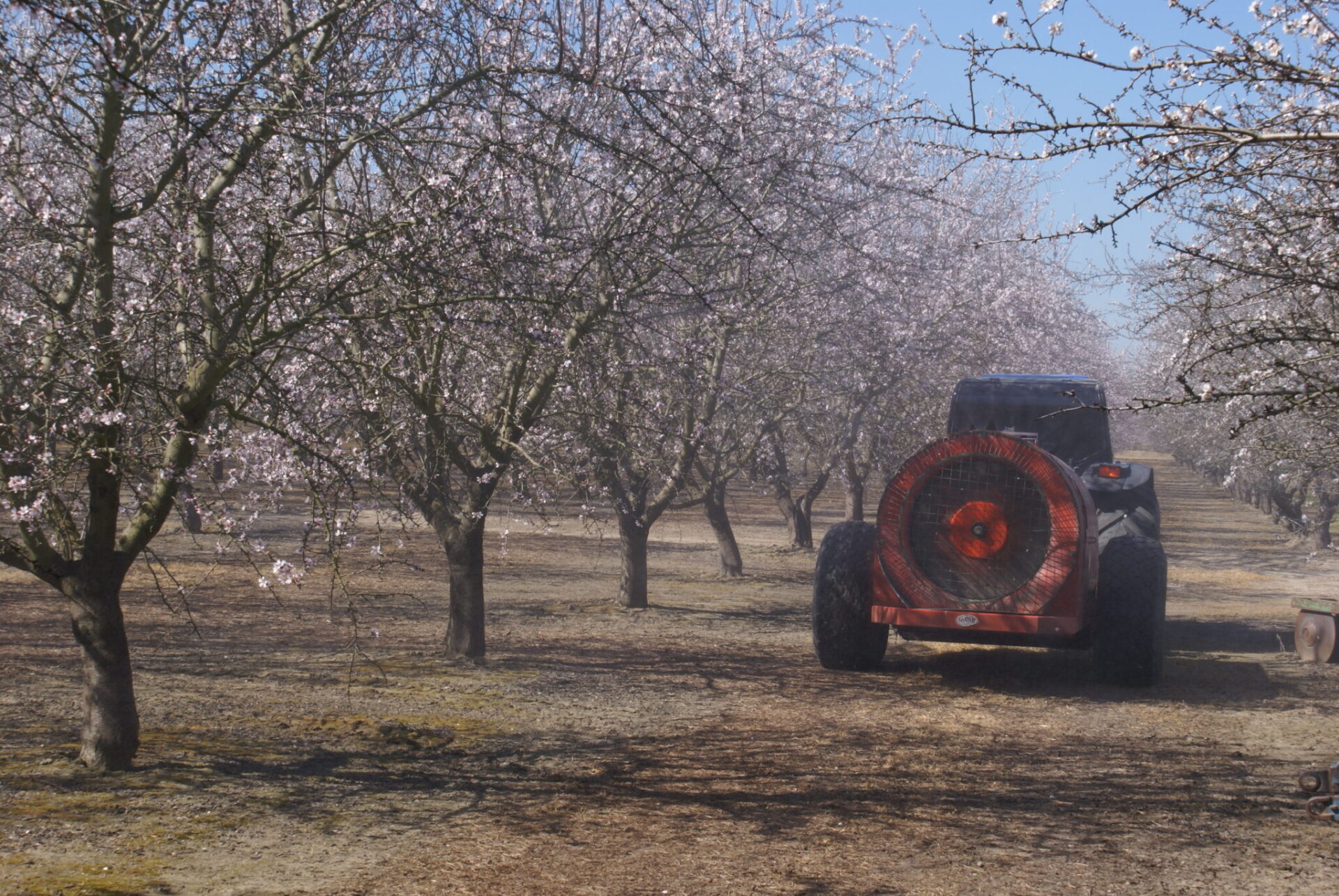While use of pesticides is often necessary to protect almonds during bloom, growers need to be aware of their specific usage strategies, including how, when and what pesticide applications are made to protect bees during bloom. Following pesticide labels, using products with shorter residual toxicity and applying at the right dates and times will help keep bees safe through bloom.
In an Almond Board of California (ABC) Training Tuesday presentation, Josette Lewis, ABC’s chief scientific officer, said that almond pollination currently represents over 15% of the annual cost of growing almonds. To reduce annual pollination costs in the future, growers need to keep costs down for the beekeeper by protecting bees during bloom and preventing die-off.
Follow the Label
It is important to read bee toxicity warning language on existing almond bloom sprays considered hazardous to bee health as a precaution, according to Mark Allen, PCA and Beekeeper with Verdesian Life Sciences. Most bloom spray labels contain this warning language.
“Anything the label says always is the law,” Allen said. “If you don’t do what it says, you’re breaking the law, technically.”
Allen said that new and renewed pesticides contain a new bee warning recently created by the EPA in cooperation with other organizations. The new warning, which features a visible hazard icon that helps signal the pesticide’s potential hazard to bees, alerts users to specific use restrictions and instructions to protect bees and other insect pollinators.
“Definitely keep your eye on this [warning],” Allen said. “There are materials you’re spraying out there that may think are safe but aren’t, and this [warning] can help make sure you can still use that material and not have a problem with the pollinator or the county.”
To read EPA’s new and strengthened label requirements, visit go.usa.gov/jHH4.
Choose Shorter Residuals
Products with shorter residual toxicity reduce the likelihood of bees coming in contact with a harmful chemical.
“If you spray, there’s a residual time after that spray where a product can harm bees before it does its job,” Lewis said. “When possible, choose the product that is effective but has a shorter residual toxicity time.”
Even if the product being added is labeled as non-harmful toward bees, Lewis said that ABC-funded research found that even adjuvant surfactant spreaders can still harm bees when they come in direct contact.
“Only use them if specifically instructed,” she said. “Adding those [surfactants] puts more bees at risk. Also, additional research states that tank mixing can occasionally make a product more lethal. When combined with an insecticide or fungicide, a pesticide product may show increased toxicity to bees in the hive. In general, don’t use insecticides during bloom.”
“[Direct exposure to pesticides] can cause disorientation to bees, which affects their ability to pollinate in the orchard,” she said. “It’s a significant impact on our ability to market almonds worldwide.”
Communication and Other Considerations
Communication is also important for keeping bees safe in an orchard, especially when managing bloom sprays. Growers and pesticide applicators need to be in communication with beekeepers about where sprays are being applied.
“It is the law for pesticide applicators and growers to notify the beekeeper where pesticides are being applied in an orchard,” Lewis said. “There needs to be a good agreement on what is going to be done in an orchard.”
Timing bloom sprays is another important consideration.
Any sprays that you do need to do, according to Lewis, should be applied when bees are not present. “Any time in the evening is safe, and nighttime sprays are far safer than morning sprays,” she said. “Leave a drying period for the product to keep bees safe from toxicity.”
Many growers will also provide a bucket of clean water, changed out frequently, for bees near the hive to prevent bees from spending time looking for other sources of standing water around the orchard that may be toxic, according to Lewis. “It is important to remove the bucket or water source when spraying as to not contaminate the water,” she said, noting that communication needs to be made as to who is changing the water and when.
If something does go wrong with an application during almond bloom or in any other instance, Lewis said to contact the county Agricultural Commissioner and not to disturb the hive. As many bees as possible need to be retained if die-off does occur. At the end of the season when pollination is no longer needed, hives should be removed.
“It’s in the best interest of the grower and the beekeeper to remove hives at the end of the season and get the bees out on time,” Lewis said.
Bee Friendly Farming
Growers can further support and protect pollinating bees in the orchard by registering to become Bee Friendly Farming certified. Miles Dakin, a Bee Friendly Farming Coordinator with the Pollinator Partnership, said that the organization has registered over 60,000 acres since January 2020, including 50,000 acres of almond.
“Bee Friendly Farming focuses on fundamentals of how to provide beneficial habitats for bees,” Dakin said. “Offering natural forage to native pollinators such as bees is needed for providing a beneficial forager habitat.”
Dakin said that Bee Friendly Farming has worked with the California Almond Sustainability Program (CASP) to make the registration process streamlined for growers. “With registration, use of the Bee Friendly Farming logo will be permitted on products,” he said.
CASP, which was established in 2009, has been working to promote Bee Friendly Farming as well as Best Management Practices for pest management in general in almond. Lewis said that insecticide use has gone down significantly in California as a result.
“A vast majority of growers and PCAs have been following these guidelines, which is great,” she said.











